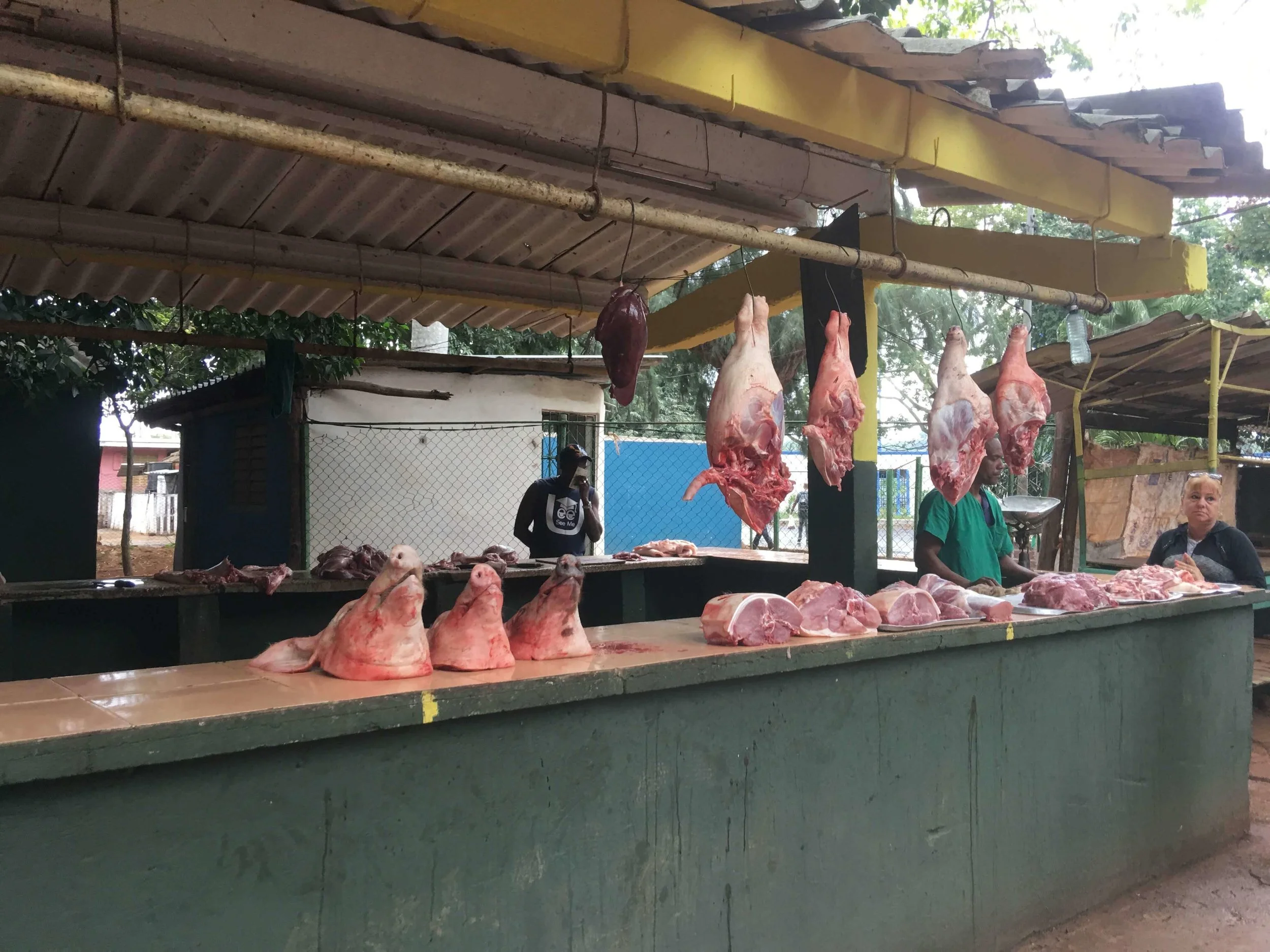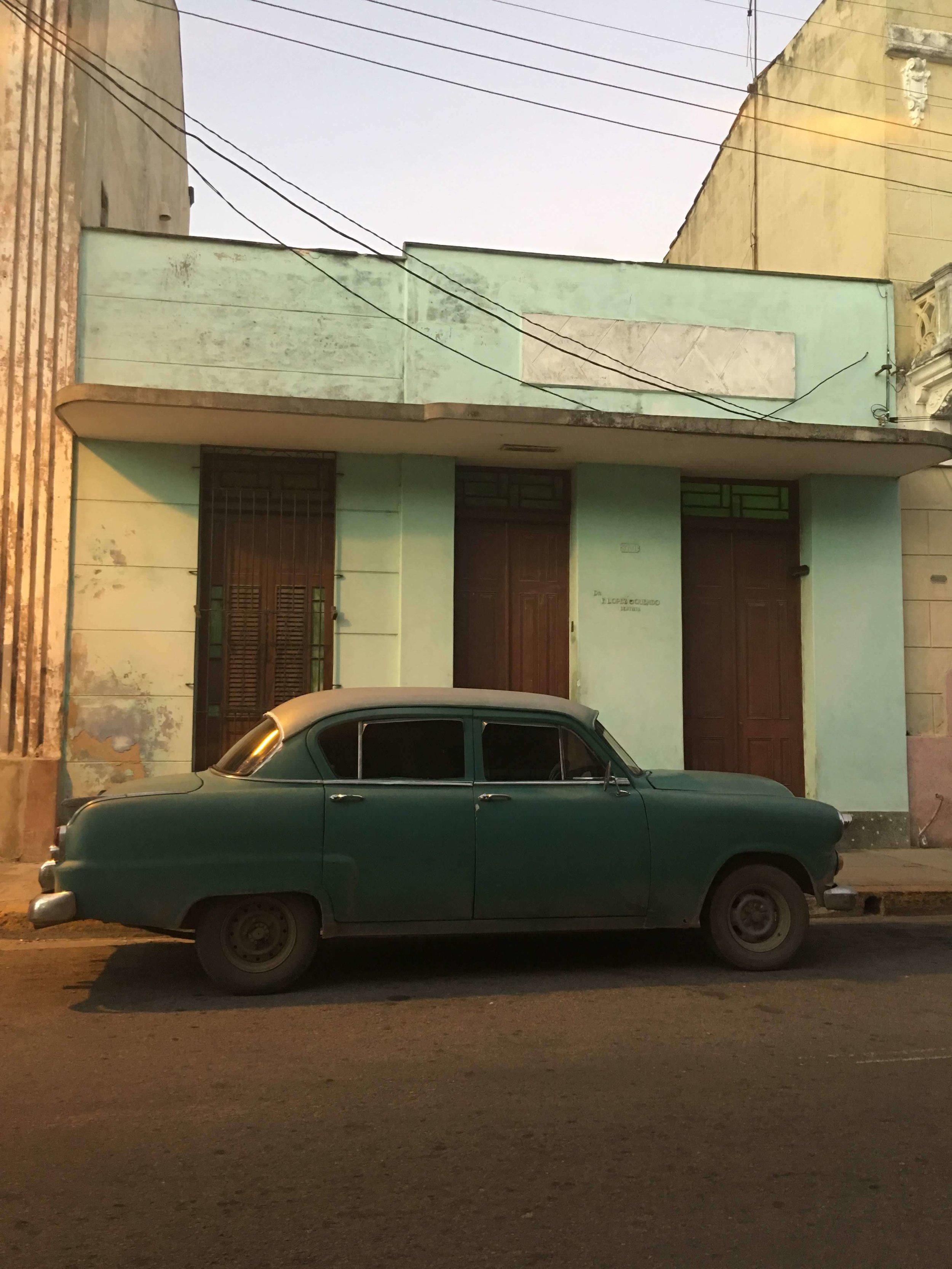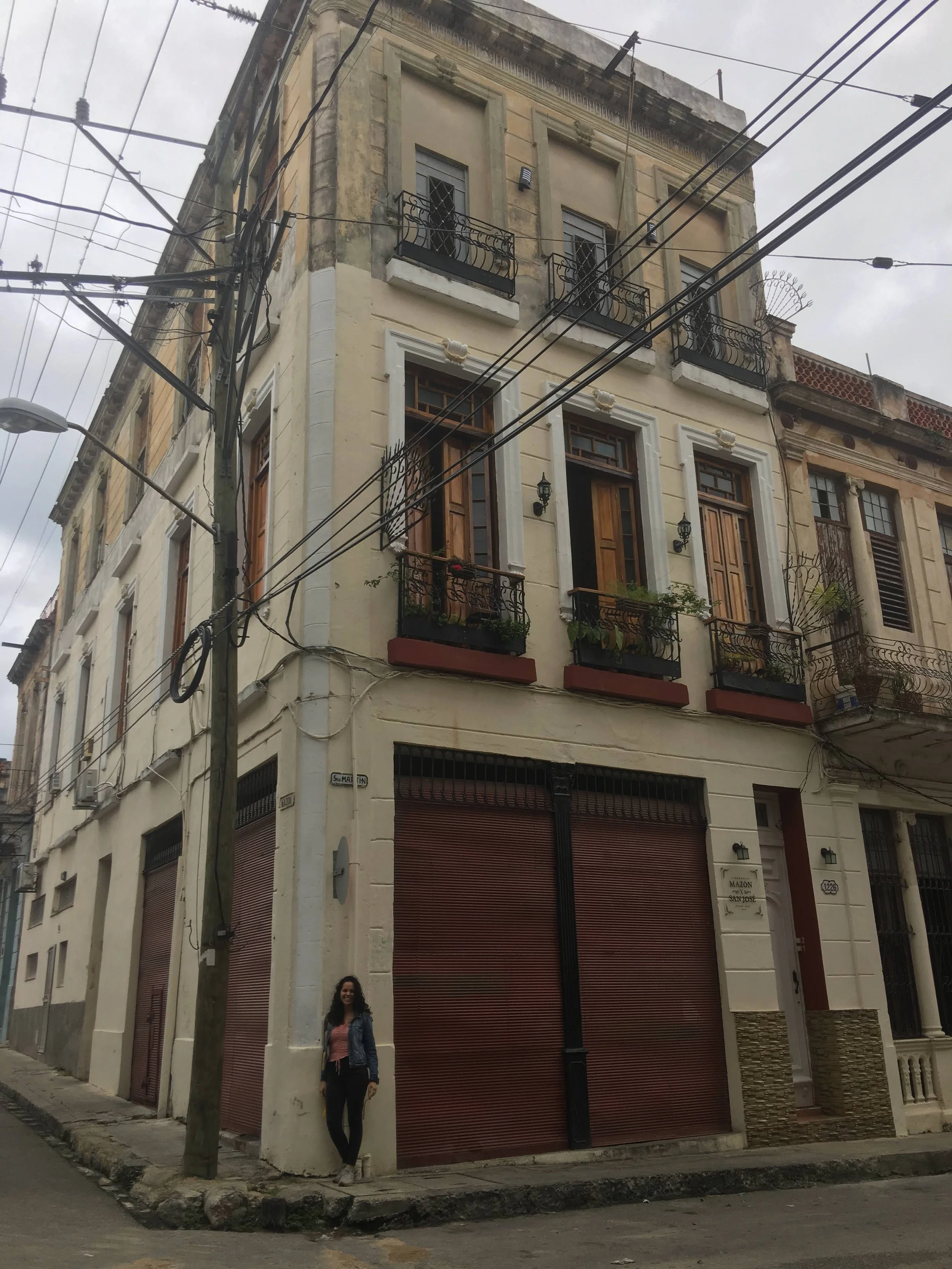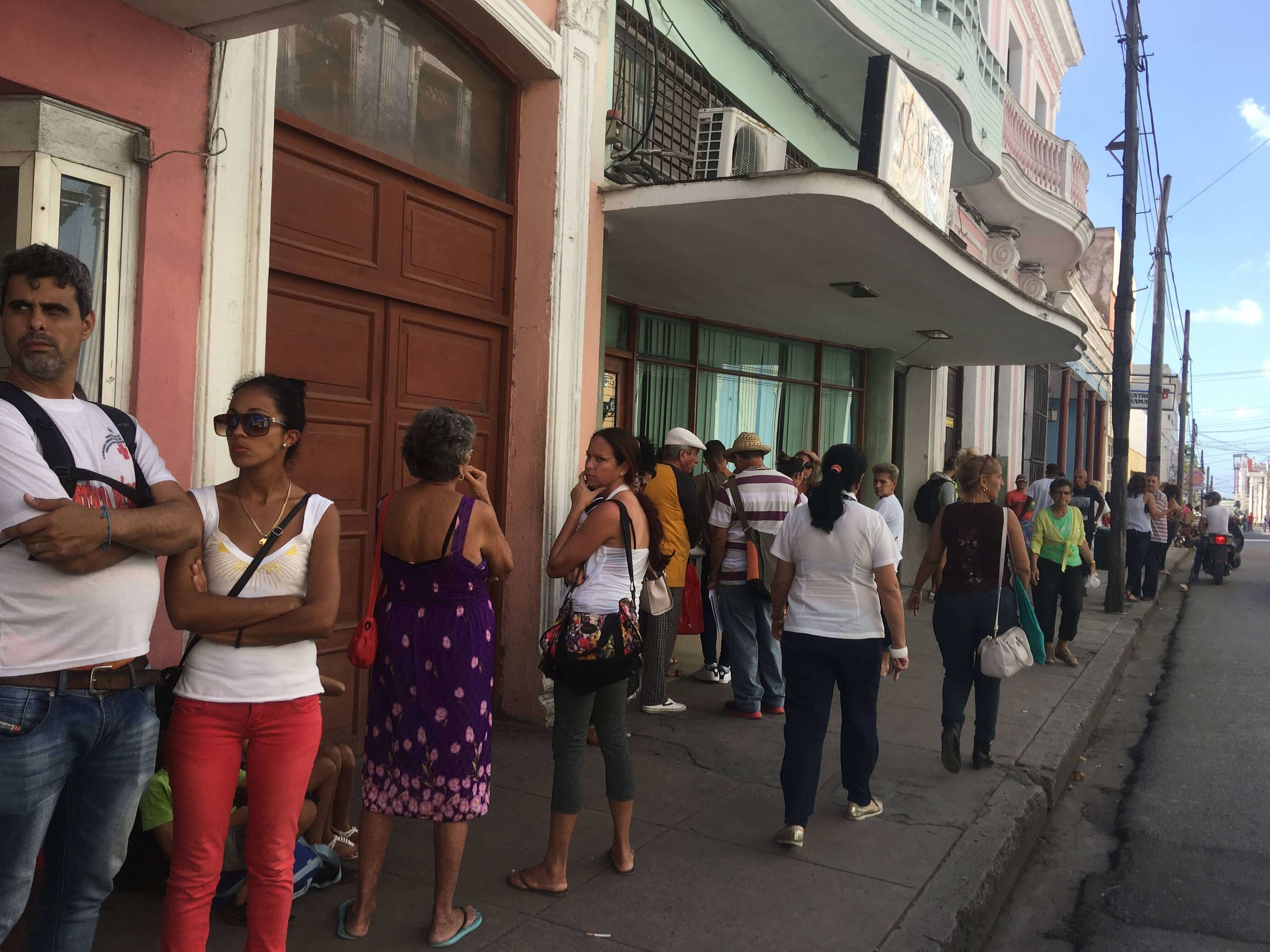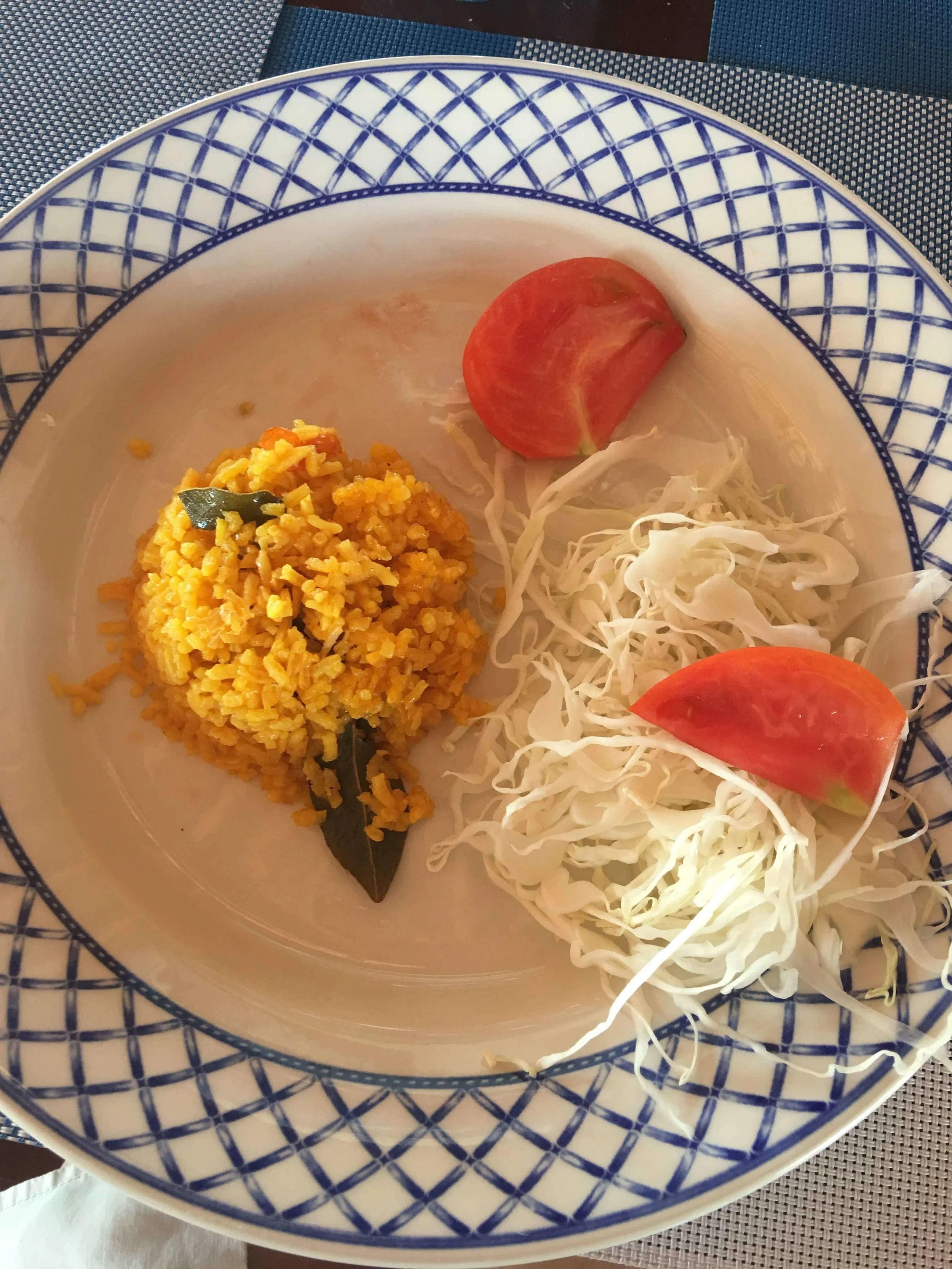Conscious Travels Through Cuba: What NOT To Do
On the beaches of Trinidad, Cuba
Disclaimer: I am very aware there might be some bias in this piece. I mean, I was raised by Cuban refugees that were imprisoned post-revolution and forced to work the coffee fields. The narrative was heavy and unyielding. For years, this was the only Cuba I knew.
When it comes to traveling consciously and sharing those travels, I’m trying my damndest to be as fair and neutral as I possibly can, but I am human and I have my own stories and narrative I’m working through. I am far from a perfect, conscious traveler. But I am trying. And I hope this piece helps you to try too.
Also, I would like to highlight two sources that have taught me so much about traveling in Cuba. Marissa from Mari Mundo and Kiona for How Not to Travel Like a Basic Bitch. I encourage you to check them out if you’re planning a trip to Cuba.
Alright, let’s get started.
¡Dale!
Roaming the streets of Havana
“I want to go to Cuba before it changes!”
Let’s start with NOT saying that. Ever.
Why?
That’s like saying you want to see Cuba locked in poverty.
As convenient as it is for you to be able to disconnect and experience an island “stuck in time” to then return home a few days later to your 2019 first world luxuries of Targets and iPhones…the Cuban people, they want it to change.
And conscious travel isn’t about you. It’s about them.
Before we go further into the NOTs of traveling Cuba, it’s important to understand the island’s history.
Cienfuegos, Cuba
The Cuban Revolution
Who: Batista vs. Fidel. Batista was Cuba’s president 1940-1944. He ran for president again in 1952, and when he realized he was going to lose, he power grabbed the Presidency and cancelled the elections. The Cuban people outraged, the stage was set for an opponent to fight back. Enter, Fidel Castro (and his brother Raul).
What: Basically, a civil war of power.
When: 1953-1959. The revolution began in 1953, but it gained momentum in 1958 when Batista’s army struck Fidel and his rebels…and it back fired. By 1959 Batista was out and Castro was in.
Where: Cuba, obvs. But also Mexico, where the Castro brothers fled in 1955 to regroup and restrategize. It was in Mexico that they joined forces with Argentine Doctor, Ernesto “Che” Guevara. They all returned to Cuba in November 1956, 82 men strong.
Why: Because Batista fucked up. Initially, Batista was pretty progressive and had a lot of support. However, over time Batista made many deals with the American Mafia and wealthy American investors which made many Cubans feels like he was exploiting them. By the time he power-grabbed the election, the people were over it. Enter Fidel. He positioned himself as the fair and righteous leader that was going to give Cuba back to its people, and that’s what the people wanted. Not all, but clearly enough to run Batista and his American supported dictatorship out.
How: Castro managed to recruit a guerrilla army of more than 200, that somehow forced the Cuban army of over 35,000 soldiers to retreat as the guerrilla fighters gained victory after victory. By March 1958, The US had a tricky relationship with the island and imposed an embargo, which contributed to Batista’s defeat as the Cuban air-force couldn’t get American parts for repairs. On January 1, 1959 Batista fled and Castro took over. The embargo has been in place since, and a lot of Cubans place the blame on America and it’s lack of support for the island’s poverty, while others point the finger at Castro and his communist ways.
Drinking cafecito with my Tio Charlie
This is just a snippet of Cuba’s history. I encourage you to do your own research before visiting the island.
You can decide for yourself how you feel about it, but at least understand the history and their political stance which is a direct reflection of the lifestyle in Cuba.
Now that we have a bit of background on Cuba’s history, let’s plan a trip there and experience the friendliest country I’ve ever visited!
Tio Claudina serving up the best malanga!
My First Time Visiting Cuba
I traveled to Cuba for the first time in December 2018. I am first generation Cuban-American, meaning my parents fled the island in the 1960’s, post-revolution. They were kids. They’ve never been back. They never will.
Growing up in Miami, surrounded by all sorts of Cuban political refugees, the narrative was pretty much the same:
“Don’t go to Cuba. Don’t support the regime by giving them your U.S. dollars”.
As I got older and started exploring the world on my own, no place enticed me more than my Motherland, Cuba. I knew I had to change the narrative, put an end to the transgenerational trauma, and decide for myself how I felt about the island.
So I booked a solo-trip to connect with family I’ve never met and do a little solo-exploring of my own.
An outdoor market in Havana
Upon Arrival
I can’t even lie, I was a bit taken aback by the condition of the island’s infrastructure. But what shocked me was the Cuba I had seen on Instagram and the Cuba that my family painted for me (which seems to be two extremes) was NOT the Cuba I was experiencing. I was experiencing the local’s Cuba, which I felt had been sadly misrepresented.
Now, I’ve only been to Cuba once. I’m no expert on traveling around Cuba. As a matter of fact, the best sources to ask about traveling to Cuba is, well, Cubans. That currently live or have recently lived there (recently, because the Cuba in 1960 is not the Cuba of 2019). My favorite Cuban blogger is a great resource.
And although I’m no expert, I did have the benefit of hearing both sides of the story…my Cuban family in Miami (the ones that chose to leave) and my Cuban family in Cuba (the ones that chose to stay).
I do not speak on behalf of all Cubans. How could I? I speak on behalf of my family, both sides, and my personal experience with the island.
Below I will be sharing with you some things to be mindful of when traveling around Cuba, including how you’re sharing your trip via social media.
Specifically, what NOT to do…
Do NOT Show Up Empty Handed
If you have family in Cuba, you already now. If you don’t, now you know. Bypass the resorts/airbnbs and drop off your donations at a local church in Havana. Items they need:
Medicine
Toilet paper
Deodorant
Bandaids
Body care (soap, shampoo, conditioner)
Shoes
Brushes
Sheets and towels
Feminine products
Toys
Oreos (trust me)
This will require you to check-in a bag. You absolutely do not HAVE to do this, but if it feels like the right thing to do, the option is always there.
And in the spirit of doing the right thing, if you want to show the world how good of a person you are by posting your generous act on social media, at least tell us what to donate and where, with detail. Also, if you insist on taking pictures with “poor” kids, ask the parents/guardians permission to post their photo online before doing so. And ask yourself why you want to post this picture?? Try to center the subject around the families and their stories, if and only if they willingly want to share.
Yes, they’re everywhere
Do Not Glamorize The Old Cars
The only fascinating thing about the 1950’s Chevrolets in Cuba is the fact that the Cuban people were able to maintain them for over 60 years with minimal makeshift parts.
You will eventually have to hop in one to get around, so enjoy the ride! But before you hit “Share”, does the world really need another top-down, cigar in hand, fedora slightly tilted to the left, #cubaconvertible photo? Ok, fine, post the pic, but maybe caption the drivers story and how they were able to remarkably maintain this car. Just give us something else, will ya?!
Where my father was born in Havana. Turned into a Casa Particular.
Do NOT Glamorize Crumbling Buildings
It’s called poverty porn and it’s a thing. Google it. Those “charming”, falling apart, haphazardous buildings are people’s homes, not a backdrop for your next #travelinspo-fashion-photo shoot. If you insist on posting photos, again, give us something else.
Perhaps chat with someone that actually lives there and ask them if they would like to share. Ask them what it’s like living in Cuba, living there in that building. Maybe they love it, maybe they hate it…that’s for them to decide. I’m not saying don’t pose and post (I mean, see above). I’m just saying, why do you want to post it? Think twice.
A local dubbed Cuba “The country of lines”
Glamorizing vs. Appreciating
There is a subtle difference. By all means, please appreciate the beauty that is Cuba. The Caribbean’s biggest island is vibrating with life and affection. I mean, have you laid eyes on those turquoise waters?!
But as conscious travelers we have a responsibility when sharing our travel experiences, whether through social media or just thru conversations with family and friends.
And isn’t there already enough of that out there? You know, the Cuban poverty porn accessorized in a sundress and floppy hat captioned “Stepping back in time in the island stuck in time”. Enough of that already.
Selling pan con lichen in the streets of Havana
Do NOT Impose Your Political Views
This isn’t a Jason Aldean concert on the 4th of July, so leave your star spangled banner pride at home. Americans (not all, obviously) have a way of pushing their “America is the best country” point of view. No one likes that. Not even Americans.
Believe it or not, a lot of Cubans support the regime. A lot don’t. But a lot do. Both have spent their entire lives analyzing their country’s political situation and we will never know what it’s truly like to live there day-to-day. Respect your host country and do more listening…and at the very least a little learning/understanding.
The most charming little hipster Cuban coffee shop in Cienfuegos
Do NOT Pity Them
They don’t need it. Cubans want you to come, spend your money in local businesses, support the growing “middle class” ( I use that term loosely), bring them Oreos (seriously, trust me on this one), and just have a good time without your first-world guilt.
They are highly educated and cultured people and have a pretty damn good grasp on the complexities of their own country, which you in no way can fully comprehend after a 10-day trip. Leave your “how to fix Cuba” opinions at the Jason Aldean concert.
A local craftsman in Trinidad making spoons into jewelry
Do NOT Get Frustrated With the Cuban hustle
I met a couple of American tourists in Trinidad that straight up asked me, “Are the Cubans in Miami like this?”
“Like what?” I replied.
“Like this annoying.” Insert red-angry-face emoji.
They’re “annoying” because they’re hustling for a dollar. You can’t walk the streets of a touristy town like Trinidad without getting asked 5 times in a matter of 3 minutes if you want to take the caballos to the waterfall for just $10.
But before we can jump on their caballo, let’s jump off our high horse for a friendly reminder.
This is their Home. We are visitors.
We CHOSE to come here. Put yourself in their shoes when you feel like screaming NO THANK YOU DAMMIT.
You don’t have to engage in a full-out conversation with every man that offers you an excursion or a ride on their bici-taxi. You can smile and politely decline all while keeping your walking pace.
The beaches in Trinidad
Do NOT Get Frustrated With the Cuban Cat Call
Listen. I’m a woman. That travels alone. I get it. I know this is a touchy subject, but, but but but…
Again, you’re a visitor. As a visiting female (especially a solo-female) you have to be aware of the Cuban Cat Call. It’s a cultural thing. I’m not saying it’s right. I’m just saying it’s the way things are there, and as a traveler, we’re not there to impose our moral standards or way of living.
We’re there to experience the way the locals live. Whether you like the way they live or not is really not their problem…it’s yours.
And for the most part, they’re pretty innocent cat calls. Allow me to translate.
“What a beautiful thing.”
“Hey, pretty.”
“Wow. Will you marry me?”
I mean, can you really get mad!? Sure. But just remember where you are and why you’re there.
Do NOT Complain About The Food
Don’t even dare. Be grateful for every meal that is lovingly prepared for you.
If gastronomyy is your thing, don’t fret. Havana is experiencing a wave of gastronomy and with new restaurants opening all the time, competition has allowed the food to get better and better.
With family I just met in Havana
Going to Cuba?
I want to end this post with one last reminder before I’m called a hypocrite…
There is no right way to travel.
But can we be more conscious of how our travels (and how we share them) impact the locals in Cuba? Yea, I think so. I actually think it’s one of the greatest areas of opportunities, for American travelers in particular.
We’ve romanticized it enough and I don’t think what’s out there is doing the island justice.
Cuba is one of the most complex countries I have ever visited, with it’s socio-economic reality forcing you to tame your ego, open your mind, open it a little more, and appreciate it just the way it is.
If you have something to add about conscious traveling through Cuba, please leave a comment below. Would love to hear from you!






